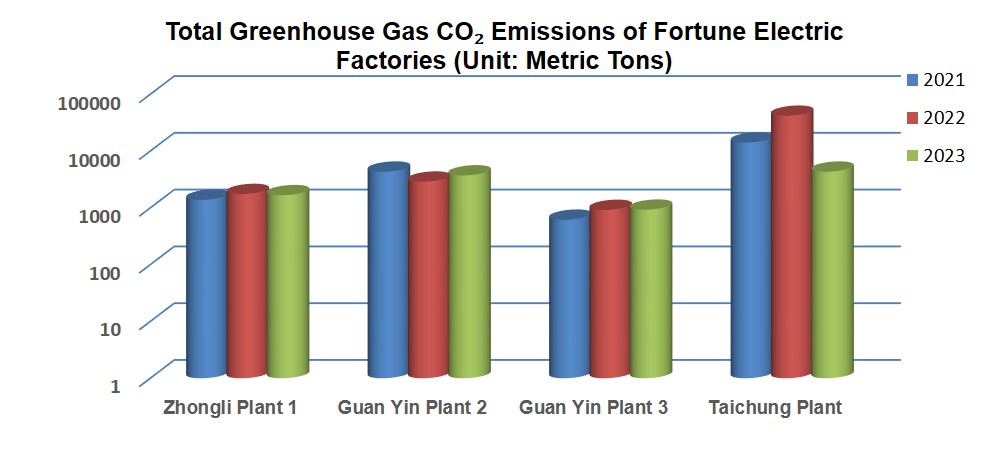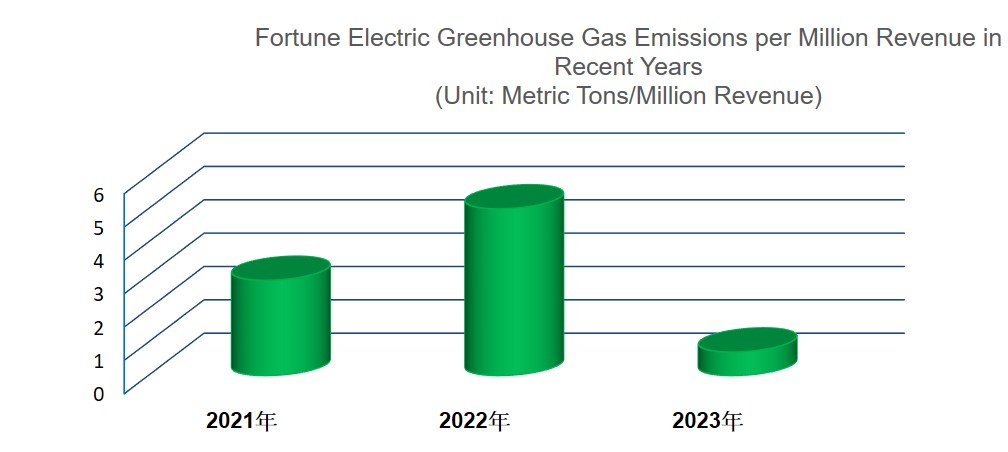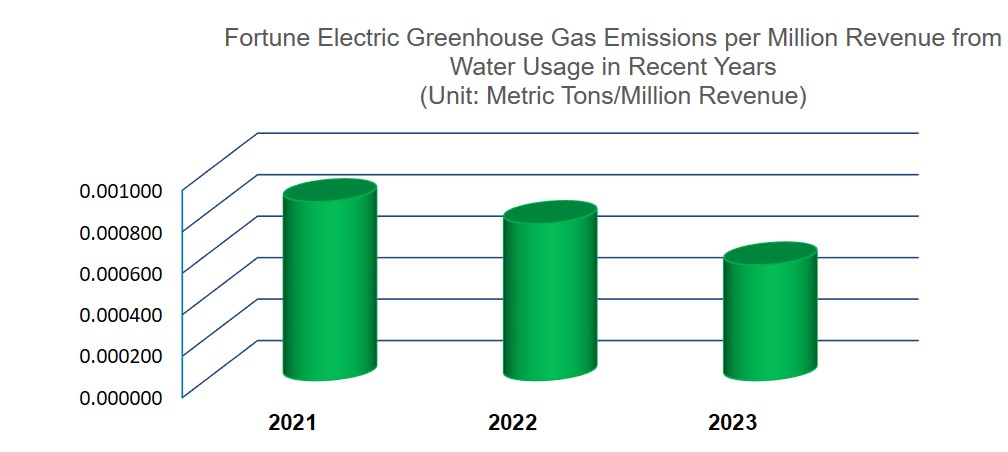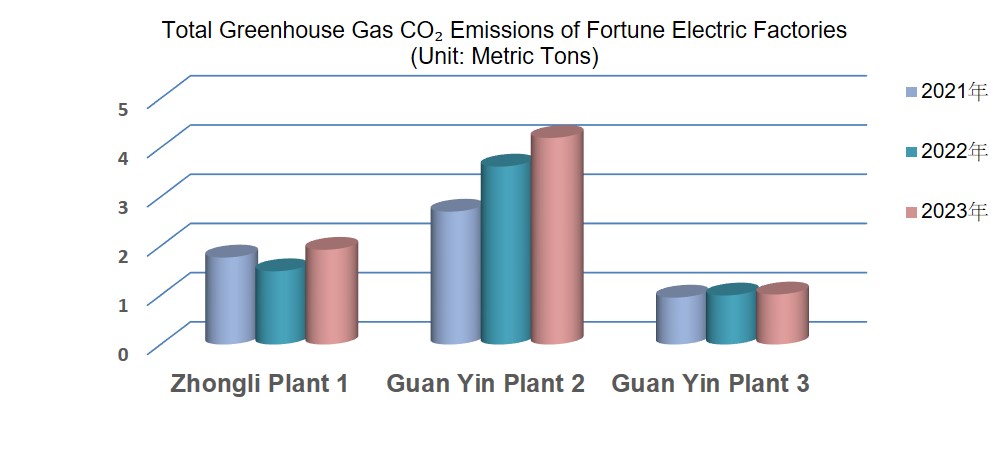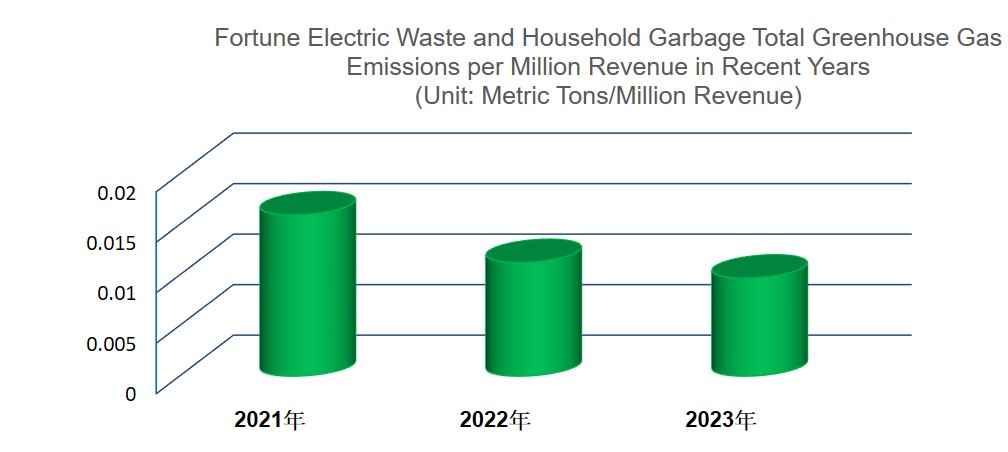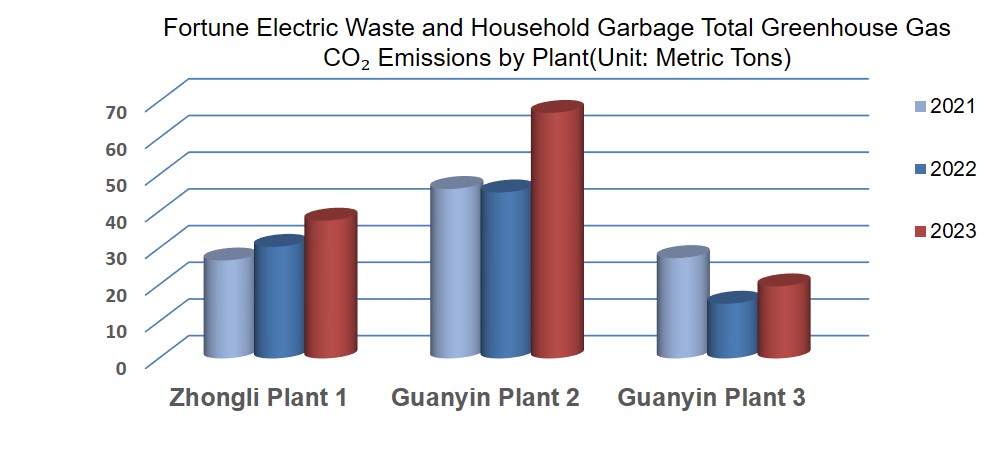TCFD Core Elements and Financial Disclosure
| Core elements | Action Plan. |
|---|---|
| Governance | The Sustainability Development Committee is responsible for convening relevant units and, based on various risks, conducts an annual review to assess and confirm the potential impacts of these risks on both internal and external aspects of the organization. This includes the identification, evaluation, and response to climate change risks. Regular meetings are held annually to select the company's priority initiatives for sustainable development, including issues related to climate change, and to take practical actions to fulfill corporate social responsibility. At the beginning of each year, a report is presented to the Board of Directors on the progress of risk management efforts from the previous year. |
| Strategy |
Identify physical and transitional risks and opportunities based on business types and operational conditions, actively promote green energy and environmental protection policies. In response to the global impacts of climate change and the greenhouse effect on the environment, in addition to establishing energy-saving and carbon reduction measures, the company promotes energy management in offices and public areas, waste reduction, and implements green procurement by purchasing products with energy-saving and environmental protection labels. |
| Risk Management |
Fortune Electric has established a risk management organization and system based on the ISO 31000 risk management framework, utilizing the PDCA management cycle to create the company's risk management system. This integrates the management of various potential risks (including operational, environmental, climate, and other risk events) that could impact operations and profitability, with the goal of providing sufficient risk management to the company’s stakeholders, shareholders, and other relevant groups. |
| Indicators and Objectives |
To respond to the impacts and risks caused by climate change and achieve green energy and carbon reduction goals, indicators are used to manage climate change-related risks and opportunities:
• The company has established an Energy Management System (ISO 50001), focusing on resolving and responding to stakeholders' concerns, and identifying potential risks and opportunities for mitigation and improvement. Projects are implemented for energy-saving and carbon reduction based on electricity, oil, and water usage statistics. The company demonstrates its corporate accountability performance through energy management, water recycling, waste resource recovery, and carbon footprint management. • Electricity Usage: The company has established an energy management system and passed third-party verification. Through institutional management and program setting, the company promotes the energy-saving and carbon reduction goal of a 1% reduction in electricity consumption. • Water Resources: Promote water conservation and implement rainwater harvesting projects and drinking water dispenser drainage recycling systems at various plants. • Waste: The company has established an ISO 14001 Environmental Management System, tailored to the characteristics of the industry. The system is used to manage process waste, reduce waste, and promote resource recovery. The company obtained the latest version of the ISO 14001 Environmental Management System in 2017. • Greenhouse Gases: After internal auditing, the greenhouse gas emissions for 2023 were concluded as follows: Scope 1 is 713.98 t CO2e,and Scope 2 is 8,534.8245 t CO2e.Regarding SF6 greenhouse gases, the company has developed recovery equipment, with recycling mechanisms in place for processes, testing, and maintenance, minimizing environmental impact. For the use of insulating oil, some transformers are manufactured with biodegradable insulating oil, such as plant-based oils, making the transformers more environmentally friendly. In the supply chain, some vendors cooperate with the company's recycling mechanisms for certain items, further minimizing environmental impact. |
Climate-related Risks and Financial Impacts
| Type | Climate-related Risks | Potential Financial Impacts | Response Actions |
|---|---|---|---|
| Transitional Risks | Policy and Regulatory Risks |
* In response to Taiwan's climate change-related regulations, it is necessary to improve energy efficiency at operational sites, increase the capacity for renewable energy installations, and incur costs for purchasing green power certificates.
* Increased costs or reduced demand for products and services due to environmental regulations or policy changes. |
• Promote the ISO 14001 and ISO 50001 systems, setting goals through a systematic management approach to promote environmental protection and energy-saving carbon reduction, fulfilling corporate social responsibility for a sustainable planet.
• Promote ISO 14064-1 greenhouse gas inventory, and obtained ISO 14064-1 certification in May 2023. • Continue to monitor relevant regulations and adjust risk response strategies as needed. |
| Technology Risks |
* The development of new and alternative technologies that may replace existing products or services could lead to a decrease in demand for current products and services, resulting in a significant revenue decline.
* The costs associated with adopting new and alternative technologies, research and development practices, and operational processes. |
• Since the manufacturing technologies for power transformers, distribution panels, high-voltage gas-insulated switches, and distribution equipment require years of accumulation, it is difficult for new competitors to enter. Over the past decade, the number of competitors has shown zero growth. It is expected that market share will grow significantly in the future.
• Actively launching automation and talent training programs, expanding production capacity, developing new products and technologies, and stabilizing quality. At the same time, cooperating with key customers to promote 6σ quality management activities, aiming to seize competitive advantages and establish sustainable business goals. |
|
| Market Risk | * With the rise of sustainability awareness, customers may opt to purchase lower-carbon products or services available in the market, affecting revenue. |
• In addition to actively pursuing orders in the U.S. market, the company is also positioning itself to capitalize on opportunities from the government's New Southbound Policy, the Japanese market, and the offshore green energy supply chain and value chain.
• Actively investing in smart grid-related technology development to align with trends and policies, strengthening existing technical capabilities, and further developing advanced technologies to maintain competitiveness in the market. |
|
| Reputation Risk |
* Collaborating with high-carbon suppliers may affect customers' trust in the company.
* Low climate resilience may affect investors' and stakeholders' trust in the company. |
• Since 2014, the company has been promoting energy-saving and carbon-reduction activities to contribute to a greener planet, establishing a supply chain energy-saving and carbon-reduction guidance system, and implementing various improvements.
• Regularly conducting organizational climate surveys, statistics, and analysis as a basis for review and improvement. |
|
| Physical Risks | Immediate Risks |
* Climate disasters (such as typhoons) may cause power loss and module damage in hydropower projects, resulting in a loss of approximately 51,700 NT per incident.
* Operational facility machinery may be damaged due to climate disasters. * Employees unable to attend work, leading to reduced productivity, lower revenue, and increased occupational health and safety costs. |
• The overflow of runoff wastewater from a neighboring plant was managed by installing drainage ditches and excavating pits and gutters to prevent overflow.
• Temporary redistribution of machinery and equipment across factories for mutual support. • Implementing a flexible shift system or arranging for employees from other departments to cover for absenteeism as needed. |
| Long-Term Risks |
* Rising average temperatures may lead to increased air conditioning use in operational sites, resulting in higher electricity bills each year.
* Buildings located in low-lying areas may face flooding during heavy rain or typhoons, leading to increased maintenance and repair costs. |
• Plan to build an energy storage system to adjust power usage and set up a solar power system for self-consumption.
• For low-lying factories, plan to install pumps, overflow embankments, and flood alarm systems. |
Climate-Related Opportunities and Financial Impact
| Type | Climate-Related Risks | Potential Financial Impact | Response Actions |
|---|---|---|---|
| Market | Launch of Energy-Efficient Products | * Aligning with market trends, enhancing company image and increasing sales and profits. |
• The government's "Nuclear-Free Homeland" new energy policy promotes energy-saving, energy-creation, energy storage, and smart system integration, which the company can support with electromechanical equipment, engineering services, and maintenance, corresponding to business opportunities.
• The government's strong promotion of energy-saving and carbon reduction policies and green energy policies will create unlimited opportunities in the heavy electrical industry. |
| Energy Source |
1. Launch of green energy-related products
2. Use of partial solar power systems in the office |
* Launching solar-powered products to increase market appeal and sales.
* Installing solar panels on buildings to power lighting and reduce electricity procurement costs. |
• Actively expanding cooperation with solar panel manufacturers and seeking appropriate solar power plant projects to jointly develop overseas markets.
• After obtaining the qualifications as a solar energy plant builder from the Pingtung County Government for the "Water Cultivation and Power Generation" project, the company completed the 1.3MW project at the end of 2011 and started selling renewable energy to Taipower in 2012. |
| Products and Services | Development of New and Alternative Technologies | * New technologies may require higher development costs but can become intellectual property of the company and attract potential collaborations. |
• The company actively develops new products and technologies to meet market demands and vertically integrates key components to reduce costs through group collaboration.
• At the same time, the company continues to focus on energy-saving and smart products related to the power grid to maintain competitive advantages in the industry and create high-quality business results. |
| Resilience | Consolidating climate change risks and response measures to enhance company resilience | * Strengthening corporate resilience to reduce the losses caused by climate change, while also minimizing supply chain losses. | • As countries push toward a "zero-carbon" goal, electric vehicles (EVs) have become a global development trend. Fortune Electric has actively explored and expanded its presence in the EV charging field, increasing market share to capitalize on business opportunities arising from the electric vehicle trend. |
| Resource Efficiency |
1. Waste Recycling and Reuse
2. Using More Efficient Electrical Equipment 3. Reducing Water Consumption |
* Reducing material procurement costs.
* Lowering electricity consumption and carbon emissions. * Reducing water costs. |
• Each year, through the energy management system, the company focuses on improving energy efficiency and optimizing equipment energy consumption.
• The company was selected as a top energy-saving and carbon-reduction enterprise by the Industrial Development Bureau and became the first in the heavy electrical industry to pass product carbon footprint verification in 2012. In 2013, the company began implementing an energy management system and became the first in the industry to pass ISO 50001 energy management system certification in January 2014. |
PROMOTION OF GREEN ENERGY PROJECTS
As an enterprise focusing on electric power and energy, Fortune Electric is dedicated to lowering energy consumption and reducing carbon emissions through comprehensive support for green energy and energy conservation. Additionally, the Company joins hands with the government to promote the development of green energy and actively participates in the cause of environmental conservation. In 2023, the Company obtained the “Green Energy” label, involving a total amount of NT$ 1.168 billion.
Changhua Coastal Industrial Park 4.9MWdReg Regulation Reserve and the Energy Storage Installation Project
As a member of the OKGO Green Energy Storage Alliance, Fortune Electric has actively been seizing business opportunities for green energy in recent years. The Company constructed a 4.9MW grid-connected energy storage site in Changhua Coastal Industrial Park covering a total construction area of 500M2. The rated maximum power reached 4.9MW, the rated battery capacity reached 5.952MWh, and the system's grid-connected voltage was 22.8kV.
To reduce the negative impact of equipment installation on the environment, the Company has also strengthened reforestation efforts for windbreaks. Additionally, bicycle lanes and two observation platforms have been set up in the surrounding scenic areas, and part of the land has been reserved to achieve the goal of a “Friendly Environment”. In the future, Changhua Coastal Industrial Solar Park is projected to annually generate approximately 140,000,000kWh of green electricity on average, which would reduce approximately 70,000 metric tons of carbon emissions, equivalent to planting 3.5 million trees, and provide electricity for 40,000 households for an entire year. This project contributes significantly to green electricity. Fortune Electric expects to continue leveraging the advantages of the green energy alliance in alignment with the goals of the state and other enterprises to achieve carbon reduction and Net-Zero carbon emissions. As a result, the Company will make greater contributions to energy transition and climate issues.
Hualien Wancheng 50MW Energy Storage Equipment Installation Project
The first large energy storage project at power transmission grade was formally launched in June 2023. Fortune Electric served as an EPC manufacturer, with the and fire protection. The engineering scope of this project covers 60KVGIS and 69KV transformers, 22KV power equipment, civil engineering and M&E works, external pipeline and line works, power fire protection design and planning, etc. Units to be coordinated and communicated with include the local county government, fire protection bureau, fire brigade, industrial park administration, local neighborhood office, environmental conservation agency, Taipower Hualien district office, system planning division, dispatching division, etc.
In terms of civil engineering, the Company has already completed the grounding grid and firewall works. Currently, equipment foundation and external pipeline works have been conducted. In terms of M&E engineering, the contract awarding for the procurement of equipment including 69kV transformers, 69kV GIS, high-voltage and low-voltage distribution board, and loop switches was completed in July 2023. It is scheduled that site installation and construction will be successively launched in the last ten days of March 2024. It is expected that this project will be completed in December 2024. Then, the energy storage capacity of 100MW/250MWh can be provided, which can reduce approximately 15,000 metric tons of carbon emissions per year, equivalent to planting 750,000 trees, and benefits the mprovement of stability and dispatching flexibility of the power systems in Hualien.
The construction of the first large energy storage project at power transmission grade in Hualien is an important milestone in the development of power systems in Hualien. The completion of this project will help improve the stability and dispatching flexibility of the power systems in Hualien. Fortune Electric provides vigorous support for the economic and social development of Hualien.
Fortune Electric Greenhouse Gas Reduction
Fortune Electric is committed to environmental protection and greenhouse gas reduction. In addition to producing industry-leading energy-efficient amorphous core transformers, which significantly reduce electricity consumption of customer equipment, the company took the lead in obtaining the CO2 inventory certification for amorphous core transformers in 2014, along with carbon footprint verification for its products, and received recognition from the Industrial Development Bureau. The company was also the first in the industry to pass the ISO 50001 Energy Management System certification. Every year, the company sets a target of reducing electricity consumption by 1%, hoping to contribute to energy-saving and carbon-reduction efforts. In recent years, the greenhouse gas emissions per million production value, as shown in the attached table, have been successfully reduced year by year through management programs that promote energy-saving and carbon reduction.
Fortune Electric Total Greenhouse Gas Emissions – Factory Total Statistics
| Unit: Metric Tons | Zhongli Plant 1 | Guanyin Plant 2 | Guanyin Plant 3 | Taichung Plant | Total | Comparison |
|---|---|---|---|---|---|---|
| 2021 | 1,384.4062 | 4,335.4320 | 617.2730 | 14,127.606 | 20,464.7172 | 100.0% |
| 2022 | 1,752.0175 | 2,895.2428 | 918.8138 | 41,842.065 | 47,408.1390 | 231.7% |
| 2023 | 1,670.0510 | 3,727.6104 | 927.6365 | 4,336.043 | 10,661.3410 | 52.1% |
Fortune Electric Greenhouse Gas Emissions Total by Plant (CO2e - Metric Tons)
| Year | Scope | Zhongli Plant 1 | Guan Yin Plant 2 | Guan Yin Plant 3 | Taichung Plant | Total | Comparison |
|---|---|---|---|---|---|---|---|
| 2021 | Scope 1 | 87.0670 | 1,404.6100 | 145.1250 | 11,386.1320 | 13,022.9340 | |
| Scope 2 | 1,297.3392 | 2,930.8220 | 472.1480 | 2,741.4740 | 7,441.7832 | ||
| Total | 1,384.4062 | 4,335.4320 | 617.2730 | 14,127.6060 | 20,464.7172 | 100% | |
| 2022 | Scope 1 | 85.2419 | 398.6147 | 495.3538 | 39,094.5034 | 40,073.7138 | |
| Scope 2 | 1,666.7756 | 2,496.6281 | 423.4599 | 2,747.5616 | 7,334.4252 | ||
| Total | 1,752.0175 | 2,895.2428 | 918.8138 | 41,842.0650 | 47,408.1390 | 232% | |
| 2023 | Scope 1 | 91.7485 | 468.6893 | 505.8165 | 1,151.6617 | 2,217.9160 | |
| Scope 2 | 1,578.3025 | 3,258.9210 | 421.8201 | 3,184.3814 | 8,443.4250 | ||
| Total | 1,670.0510 | 3,727.6104 | 927.6365 | 4,336.0431 | 10,661.3410 | 52% |
Total electricity consumption of Fortune Electric in recent years.
| Unit: Thousand Degrees | Zhongli Plant 1 | Guanyin Plant 2 | Guanyin Plant 3 | Taichung Plant | Total | Comparison |
|---|---|---|---|---|---|---|
| 2021 | 2,548.800 | 5,776.000 | 927.600 | 5,386.000 | 14,638.400 | 100.0% |
| 2022 | 2,675.400 | 5,617.600 | 830.000 | 5,546.800 | 14,669.800 | 100.2% |
| 2023 | 3,184.500 | 6,575.200 | 850.000 | 6,429.600 | 17,039.300 | 116% |
Recent Total Output Value of Fortune Electric
| Unit: Million | Chungli Plant 1 | Guanyin Plant 2 | Guanyin Plant 3 | Taichung Plant | Total | Comparison |
|---|---|---|---|---|---|---|
| 2021 | 1,842.444 | 3,146.373 | 1,296.390 | 880.183 | 7,165.390 | 100.00% |
| 2022 | 2,583.093 | 3,891.744 | 1,585.883 | 1,420.889 | 9,481.609 | 132.33% |
| 2023 | 4,797.158 | 6,506.237 | 1,499.179 | 2,294.371 | 15,096.945 | 210.69% |
Fortune Electric's Recent Greenhouse Gas Emissions per Million Dollar Output
| Unit: Tons per Million Dollar Output | Zhongli Plant 1 | Guanyin Plant 2 | Guanyin Plant 3 | Taichung Plant | Total | Comparison |
|---|---|---|---|---|---|---|
| 2021 | 0.751397 | 1.377914 | 0.476148 | 16.050760 | 2.856051 | 100.0% |
| 2022 | 0.678263 | 0.743945 | 0.579370 | 29.447807 | 5.000010 | 175.1% |
| 2023 | 0.348133 | 0.572929 | 0.618763 | 1.889861 | 0.706192 | 24.7% |
